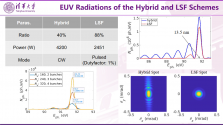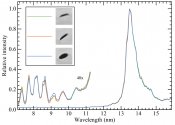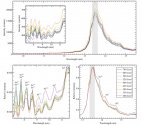Apparently China is using a different approach to producing 5nm chips from companies like ASML, who focused on very complex solutions because they need to sell lithography machines as products which demand compactness.
China is adopting a 'production line' approach which is more expensive to set up, takes up more space, and uses more power, but this is a trade off they were willing to make because their primary concern now is not to sell products but to ensure they can make their own chips.
In very simplified terms, ASML uses a very complex setup to produce beams and filter for the right frequency to etch their chips. the Chinese method instead produces a more messy beam but had it run through a much longer 'track'. Over a long distance the beams of different wavelengths will disperse differently and become separated more, and then it is just a matter of capturing the beam of the right wavelength at the right placement for etching.
Advantage of this is that they can run multiple chips sizes at once (28, 20, 16, 10, 9, 7, 5mm etc) and apparently can also select for 3mm, 1mm and even up to 0.1mm, if other physics factors are not prevent it already.
And apparently rejects from say a finer transistor size run might be able to be re-etched at a coarser size for other purposes.
China is not making lithography machines. She is building lithography factories. The kind of stuff that even ASML might not be able to pull off but China had the resource and the necessity to make happen.
China is adopting a 'production line' approach which is more expensive to set up, takes up more space, and uses more power, but this is a trade off they were willing to make because their primary concern now is not to sell products but to ensure they can make their own chips.
In very simplified terms, ASML uses a very complex setup to produce beams and filter for the right frequency to etch their chips. the Chinese method instead produces a more messy beam but had it run through a much longer 'track'. Over a long distance the beams of different wavelengths will disperse differently and become separated more, and then it is just a matter of capturing the beam of the right wavelength at the right placement for etching.
Advantage of this is that they can run multiple chips sizes at once (28, 20, 16, 10, 9, 7, 5mm etc) and apparently can also select for 3mm, 1mm and even up to 0.1mm, if other physics factors are not prevent it already.
And apparently rejects from say a finer transistor size run might be able to be re-etched at a coarser size for other purposes.
China is not making lithography machines. She is building lithography factories. The kind of stuff that even ASML might not be able to pull off but China had the resource and the necessity to make happen.
Last edited:






